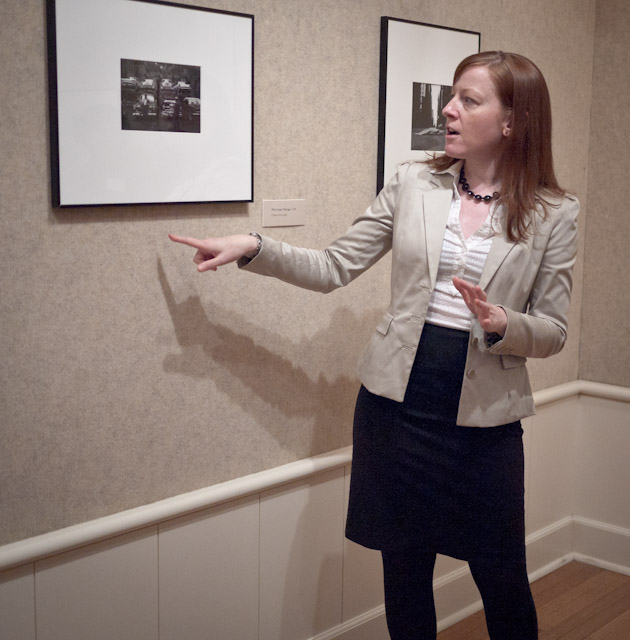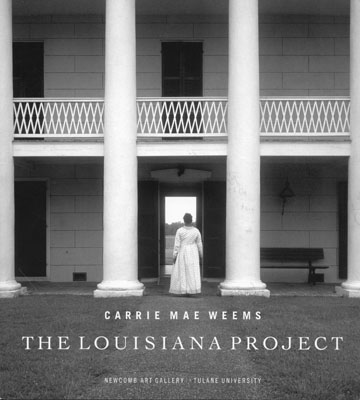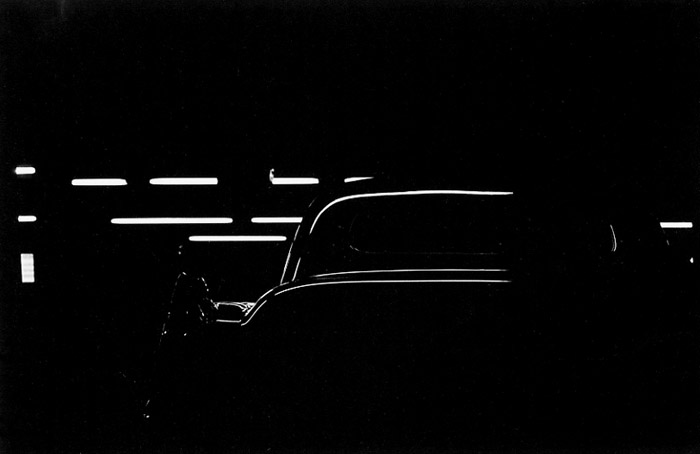I live just a few blocks from the Miracle Mile in Los Angeles, a stretch of Wilshire Boulevard designed in the 1920s so that the buildings lining its curbs were intended to best be seen through the windshield of an automobile. This truly modern idea navigated passersby away from previous modes of pedestrian, horseback, wagon or train travel. Los Angeles was, until then, a series of dirt roads circumnavigating what once were Ranchos of epic scale. This urban planning led to a vast boulevard of simplified architectural forms, large, sleek, bold and ideally viewed at a steady speed of 30 miles per hour. The ensuing contributions to Streamline Modern and Art Deco vernacular are numerous and when viewed contrary to plan, as a pedestrian, were the first thing I thought of when Julia Dolan turned me onto the work of Ray K. Metzker, now showing at the Portland Art Museum.
As the Museum’s new Curator of Photography, I should say Dolan turned Oregon onto Metzker, but having met recently at a dinner party at the home of my brother and sister-in-law, I felt motivated to look into his work and finally turn the familiar name into something tangible. What I found was an extensive body of work by a living photographer, as elegant and finely contoured as the cars he photographed.

Julia Dolan’s notes on her current exhibition describe Metzker in the following passages:
Ray K. Metzker: AutoMagic, an exhibition of more than sixty works by Philadelphia-based photographer Ray K. Metzker, complements the exceptional artistry featured in the Portland Art Museum’s summertime exhibition The Allure of the Automobile. In a career that has spanned more than five decades, Metzker has continually photographed cars, charting their notable physical and cultural presence within the space of the modern city. AutoMagic places the vehicle within a broader social context by exploring the many nuances of auto-influenced urban behavior.
Metzker’s photography career began during the early 1960s, just as automobiles, parking garages, crosswalks, and traffic signals were becoming ubiquitous fixtures in many American cities. Metzker, who was already recording the design of urban spaces and public behavior, was poised to reveal the evolving formal and societal relationships among cars, pedestrians, and even architecture. In many of his photographs from this period, automobile form is paramount, and surfaces of smoothly curving metal are contoured by sunshine or artificial light. In other works, pedestrians and drivers commute along thoroughfares with efficiency, their aloof public personas masking their private lives. On occasion, occupants hang arms and heads out of car windows—relaxed postures that suggest a less hurried relationship between driver and destination.
Although Metzker sometimes detoured from urban topics to explore new environments and camera techniques—examples of which can be seen in this exhibition—he always returned to the city and the automobile. Indeed, Metzker’s ability to capture the essence of urban movement remains unfailing. Both automobile and human form are purely expressed and beautiful to behold in his photographs; tonal contrasts and an exceptional sense of composition amplify the intensity of purpose that moves commuters through the space of the city by car or on foot, perpetually suspended between one point and the next. From decade to decade, Metzker treats the automobile as an aesthetic object and catalyst of social change, finding beauty as well as ambivalence in modern machinery.

Prior to joining the curatorial staff in Portland, Julia Dolan was the Horace W. Goldsmith Curatorial Fellow in Photography at the Philadelphia Museum of Art and previously held positions at the Addison Gallery of American Art, Phillips Academy in Andover, Massachusetts and at Harvard University ’s Fogg Art Museum. She holds a Ph.D. in Art History from Boston University, an M.A. in Art History from Penn State, and a B.F.A. in Photography from Maryland Institute College of Art. All signs point to Dolan being an outstanding addition to the cultural life of photography. She was gracious enough to take time from a busy schedule to address my questions regarding the Ray K. Metzker: AutoMagic exhibition, as well as her plans for exhibitions and collections.

When you elected to show the Ray K. Metzker work was it a collective goal of the various museum divisions to run related exhibitions in conjunction with one another?
In this case, yes. I knew that I had the gallery space near our special exhibition galleries during most of the run of The Allure of the Automobile. I didn’t feel the need to show cars, but I wanted to express some kind of issues around automation–Machine Age imagery, for example. But then I revisited Ray’s work about a year ago and felt that it would be a perfect fit.
Did you have a prior relationship with Metzker when you were in Philadelphia?
I stood in the same room with him once, and I was able to see his many prints in storage there, but no, we didn’t meet officially. I was too nervous to say hello to him.

Is there a Metzker image that has a special hold on you – one that makes you stop in your tracks as you walk through the gallery?
There are so many, it’s hard to isolate just one. That’s why I brought out 67 prints from New York! Metzker exquisitely captures the manner in which pedestrians move past and around automobiles as they make their way through the space of the city. His vision is particularly exceptional with this kind of scene during the early 1960s and in the City Whispers series from the early 1980s. Have a look at almost any shot from these periods, you’ll see what I mean.
Will you talk about where you’re heading with upcoming exhibitions? Short term and or long-term goals?
The permanent gallery space for photographs is meant to display photographs from our permanent collection, which numbers about 6500 photographs. The images selected for this gallery depend on various themes that I develop as I learn more about the collection. It can hold as many as 75 photographs. The images are rotated every 4-5 months so that regular visitors can see a variety of images, and also to protect the prints from too much light exposure. In 2013 we’re hosting Carrie Mae Weems: A Retrospective, which is organized by the Frist Center for the Visual Arts and will travel to the Cleveland Museum of Art as well as the Guggenheim in New York. My main goals include keeping the rotation lively in the permanent galleries, getting to know more about the region’s photographers, adding to the collection, and bringing in major exhibitions when possible. I’d like to originate a major traveling exhibition at PAM, but that is a longer-term goal.


Knowing that funds are short these days, adding to any museum’s collection is a bit of a pipe dream at the moment. Daring to dream, are there specific works or genres of photographs that you would target as high priorities to begin to round out the collection at Portland Art Museum?
I am most concerned about bringing more twentieth-century photographs into the collection. We are missing a number of important photographers, and could use more images by certain artists. I always pay attention to contemporary as well, but I’d like to shore up the twentieth century as much as possible. We need to encourage a collection that can hold its own and make Portland a destination for the study of the history of photography.

Can you give an example of a particular exhibition in which you felt curatorial inspiration? Specifically, a stand-out job by another curator and how that presentation really worked for you?
Looking In: Robert Frank’s The Americans was an incredible exhibition. It’s hard to deny the power of Frank’s book, but to see his thought process through work prints and contact sheets was a revelation. Sarah Greenough from the National Gallery of Art made that exhibition sing. And the Metropolitan Museum of Art’s recent Stielgitz/Steichen/Strand demonstrated just how much an institution can do with a solid permanent collection. On this side of the country, the recent exhibition of Seattle Camera Club photographs at the Henry Art Gallery was fantastic, featuring lots of rarely seen works.
In the years between being a photographer and being a curator of photography, has the shift altered the ways you appreciate imagery or drawn you to work you may not have experienced in the same way as an artist?
Perhaps not directly. It was time that I took to grow up, but not to think about art critically. That period made me a better worker, more dedicated, more rigorous. I transferred that energy to art history when I finally decided that it was the route I wanted to take.
The Ray K. Metzker: AutoMagic exhibition runs through July, 2011 at the Portland Art Museum. In addition, The Allure of the Automobile is on display through September 11th, featuring 16 of the most rare and beautifully designed automobiles built between 1930 and the mid-1960s.
Photographs by Ray K. Metzker are published here with the permission of the Laurence Miller Galleryof New York, which represents the work of Mr. Metzker.

